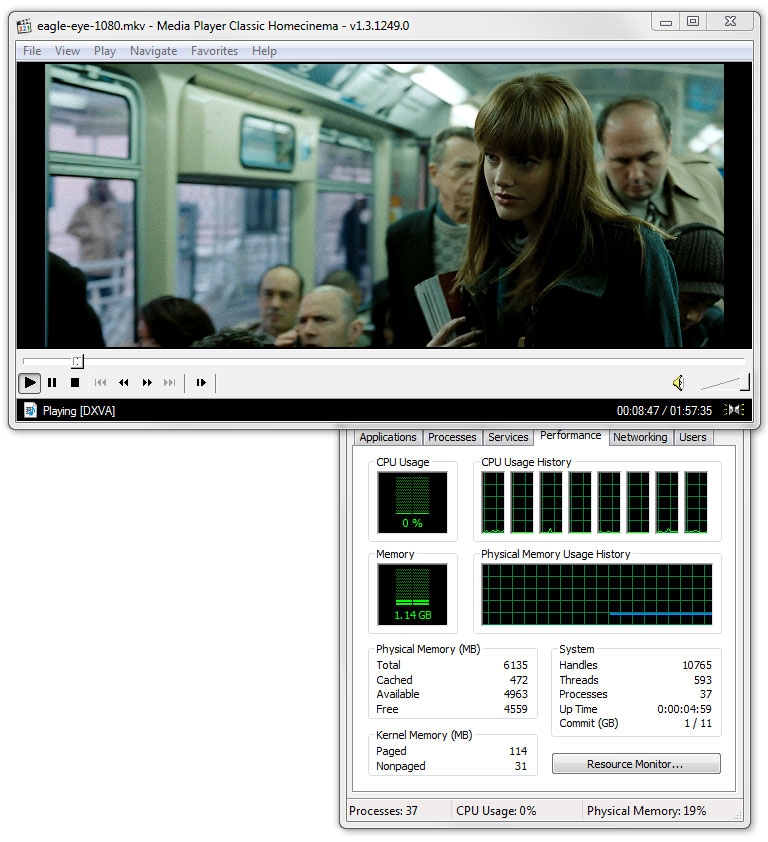GPU performance: Video acceleration
Watching 1080P MPEG / H.264 / MKV videos processed by your GPU
The x.264 format is often synonym with Matroska MKV, a media file container which often embeds that x.264 content, a much admired container format for media files. Especially the 1920x1080p movies often have some form of h.264 encoding dropped within the x.264 format. As a result, you'll need a very beefy PC with powerful processor to be able to playback such movies, error free without frames dropping and nasty stutters as PowerDVD or other PureVideo HD supporting software by itself will not support it.
Any popular file-format (XVID/DIVX/MPEG2/MPEG4/h.264/MKV/VC1/AVC) movie can be played on this little piece of software, without the need to install codecs and filters, and where it can, it will DXVA enable the playback. DXVA is short for Direct X Video Acceleration, and as you can tell from those four words alone, it'll try wherever it can to accelerate content over the GPU, offloading the CPU. Which is what we are after.
There's more to this software though:
- A much missed feature with NVIDIA's PureVideo and ATI's UVD is the lack of a very simple function, yet massively important, pixel (image) sharpening.
If you watch a movie on a regular monitor, Purevideo playback is brilliant. But if you display the movie on a larger HD TV, you'll quickly wish you could enable little extra's like sharpening. I remember GeForce series 7 having this native supported from within the Forceware drivers. After GeForce series 8 was released, that feature was stripped away, and to date it has to be the most missed HTPC feature ever.
Media Player Classic has yet another advantage, as not only it tries to enable DXVA where possible through the video processor, it also can utilize the shader processors of your graphics cards and use it to post-process content.
A lot of shaders (small pieces of pixel shader code) can be executed within the GPU to enhance the image quality. MCP has this feature built in, you can even select several shaders like image sharpening, de-interlacing, combine them and thus run multiple shaders (enhancement) simultaneously. Fantastic features for high quality content playback.

On the GT 220 thanks to the 48 available shader cores we can properly post-process and enhance image quality as well, shader based image sharpening is applied in this movie giving it that little extra crisp.
The GPU is doing all the work as you can see the h.264 content within the x.264 file container is not even a slight bit accelerated over the CPU. Read more about this feature right here in this article.
Resource:
